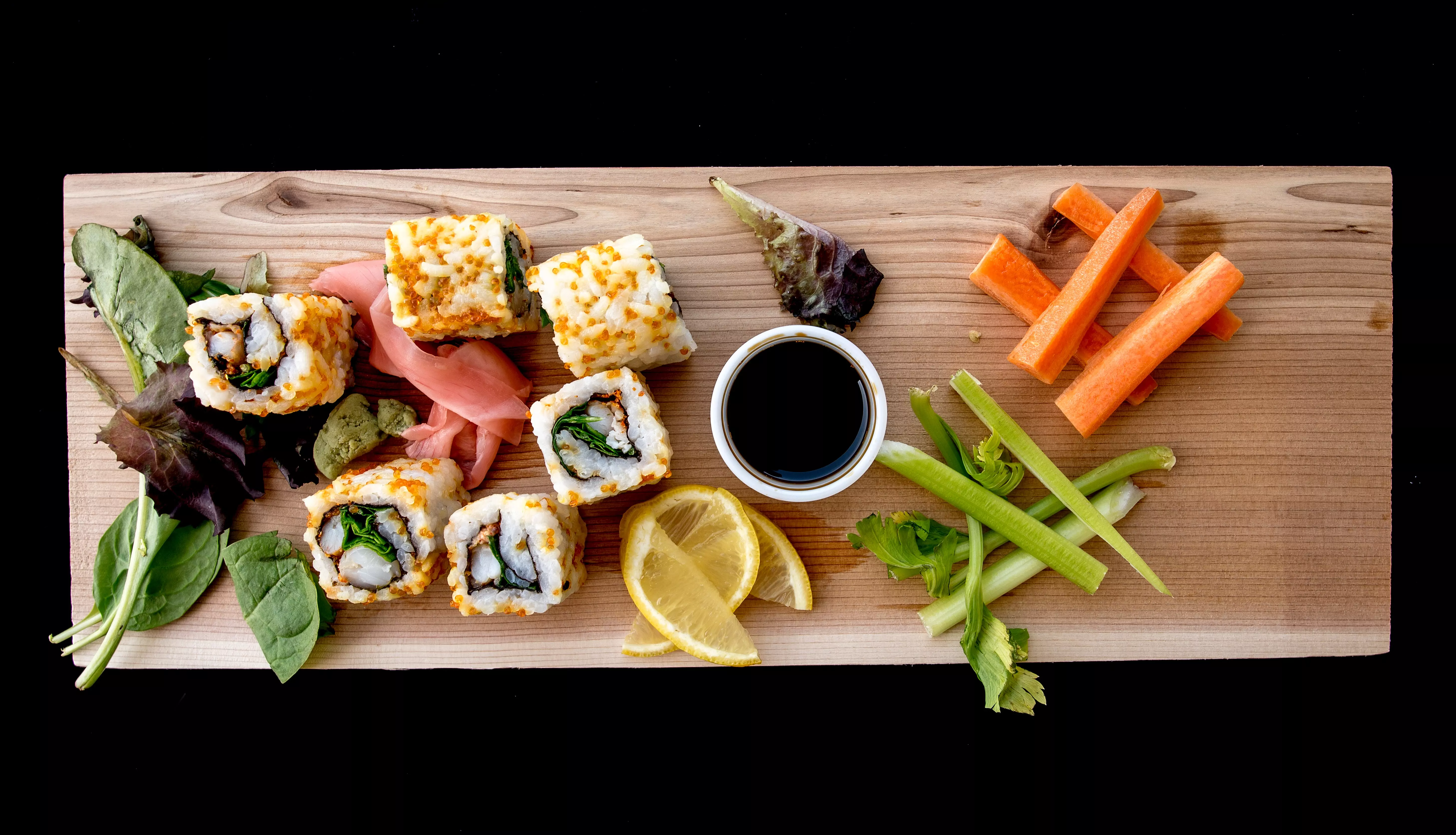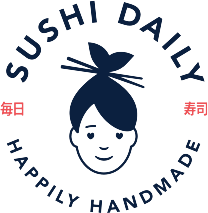Sintesi
The global sushi market has seen substantial growth, particularly in Italy, where sushi has become an important part of the culinary landscape. However, the COVID-19 pandemic has had a dual impact on the market, causing a sharp drop in restaurant sales, with a 50% fall in new catering business, and at the same time boosting sushi sales in supermarketss, with consumers increasing their at-home consumption by 6 billion euros in 2020, although this did not fully offset the 31 billion euro loss in the restaurant and bar sectors.
changing tastes: The growing popularity of sushi in Italian markets
In recent years, the Italian market has seen a sharp rise in the popularity of sushi, a dish that embodies the refined taste and cultural elegance of Japanese cuisine. Initially greeted with skepticism, sushi has now become a staple food for Italian consumers, who appreciate the quality and variety of these delicate morsels. In Italy, the rise in sushi's popularity has become particularly evident with sales soaring by around 9% in 2018, with around between 40% and 45% of consumers adding sushi to their shopping experiences in the latter part of the year. The trend has continued, bolstering sushi corners in supermarkets, which have seen notable growth, with a growth rate of around 5-6% and sales reaching north of 110 million euros. The Italian sushi market particularly favors salmon, with Norwegian salmon imports jumping from 320% to 330%, signalling a strong preference for this specific ingredient.
In terms of preferences, Italians have expressed a penchant for certain types of sushi such as Uramaki, Nigiri and Hosomaki, particularly among the younger demographic aged 18 to 30. Sushi is the ideal option for social gatherings as well as for quick, healthy lunches, reflecting changing demand drivers that emphasize convenience, health-consciousness and quality. Supermarkets have skilfully responded to the burgeoning appetite for sushi by incorporating sushi corners into their premises, where consumers can find both ready-to-eat and fresh variants.
The main market players shaping the sushi landscape in Italy
Analysis of the sushi market in Italy reveals the existence of several key players, each contributing to the richness of the offer available to consumers. These market players don't just serve delectable sushi rolls; they define the culinary experience and set trends in one of the most dynamic food segments. Here's an overview of the main players carving out a place for themselves in the Italian sushi market, without focusing on their sales figures:
- SushiDaily: Sushi Daily has established its presence with over 150 kiosks in supermarkets and hypermarkets across Italy, bringing sushi closer to the everyday consumer. As a forerunner in the sushi market, Sushi Daily offers an authentic experience with chefs who prepare sushi on site, guaranteeing the quality and freshness that customers demand. Its extensive presence and commitment to affordable sushi have made Sushi Daily an influential force in the sector.
- Just Eat: Just Eat has established a major platform that makes it easy to explore sushi from the comfort of home. The company has managed to connect its customers with over 24,000 partner restaurants, including a multitude of sushi joints. By catering to the modern lifestyle that values convenience and variety, Just Eat has secured a substantial share of the market, particularly among younger generations who are inclined to seek technological solutions for their dining needs.
- Esselunga: Known for its significant impact on Italian supermarkets, Esselunga stands out for its own private brand dedicated to sushi. By prioritizing consumers' needs for quality and safety, particularly for products such as raw fish, Esselunga's sushi corners offer a trusted destination for those who want to indulge in sushi as part of their regular shopping.
- SeafoodCouncil: Advocates of sushi excellence Although not a direct supplier of sushi, the Seafood Council plays a key role in setting quality standards and promoting sustainable practices in the sushi market. It plays a key role in shaping the way sushi is offered in different channels, advocating responsible sourcing and freshness in line with consumer values.
per comprendere questo mercato
Dettaglio del contenuto
 Informazioni
Informazioni
- Pagine : 30 pags
- Formato : Versione PDF e digitale
- Ultimo aggiornamento : 25/01/2022
 Riepilogo ed estratti
Riepilogo ed estratti
1 Market summary
1.1 Definition and presentation
Sushi is a typical Japanese dish prepared with vinegared rice, raw fish, sesame, ginger, seaweed and other typical ingredients.
It wasn't until the 19th century AD that the nigiri, one of its most famous variants, was invented by the man considered to be the inventor of sushi: Hanaya Yohei.
The most popular types of sushi are:
- Maki - rice rolls wrapped in nori seaweed with fish, vegetables and eggs inside;
- Temaki - rice cones wrapped in seaweed and filled with fish and vegetables;
- Nigiri - rice shaped into an oval shape covered with cooked or raw fish.
The sushi market is definitely growing globally. During the period 2021-2025 it is expected to grow by $2.49 billion, progressing at a CAGR of almost 3%.
In Italy, sushi has become so popular that Japanese cuisine is considered one of the most popular and profitable "ethnic" cuisines, so much so that sushi is no longer only eaten in restaurants but is also increasingly sold in supermarkets. Sales have certainly increased in recent years and it is estimated that around 43% of Italian consumers have put sushi in their carts at least once.
A trend that should certainly be taken into account is that of sushi-corners, which in 2019 alone had a remarkable annual growth rate of around 5.4%. This type of sale, where sushi is prepared in front of the customer's eyes, is one of the most popular because it evokes the quality of this dish, showing the customer both the freshness of the ingredients used and the tradition involved in preparing the dishes.
As can be deduced from the information gathered, the sushi market certainly has wide margins for growth, since it can be read in various studies that about 96% of Italians would like to eat it and among these there is a notable 28% who say they would be happy to eat it every day.
1.2 Global Market Analysis
Mercato dei ristoranti di sushi
1.3 The Italian Market
The Italian market for sushi has literally upsurged during the last decade. After an initial general feeling of uncertainty, sushi has proliferated in the Italian panorama, especially because of the variety offered by the Japanese cuisine, both in terms of quality of products and selling points. Despite the fact that lots ...
1.4 Covid-19 Impact
Taking into account Covid-** and the Italian market of sushi, it is worth splitting the impact that the pandemic exerted on it into two components: on one hand, the critical effect that it had on restoration, and, on the other hand, the somehow increase in the demand for the product at ...
2 Demand analysis
2.1 Demand Overview
Introducing the main trends related to the demand of sushi in the Italian market, it is worth highlighting the preferences that consumers show in the choice of such products. In particular, their choice is mainly based on the type of fish with which the sushi is produced. The following graph reports ...
2.2 Demand Drivers
The market under analysis can be split into two sub-categories: it includes both the integration of sushi in supermarkets' product lines and the presence of sushi bars and restaurants on the territory.
In particular, dealing with supermarkets, the main driver of demand is the quality-price ratio. Consumers are well aware of ...
2.3 New Trends in Demand
As pointed out before, the vast majority of consumers seem to be prone to experiment new types of food and dishes. Strictly related to the market of sushi, it is worth mentioning an increasing trend in the proliferation of the so-called fusion cuisine, which can be considered as the combination of ...
3 Market structure
3.1 Structure and Dynamics of the Market
The Italian market for sushi can be split into three main components:
Sushi restaurants; Sushi corners in hypermarkets and supermarkets; Asian and Fusion restaurants, which also supply sushi to their clients as part of their menu.
In particular, the sushi market in large-scale retail trade appears to be highly concentrated, given ...
3.2 Value Chain
[***]
3.3 Distribution Channels
The spread of the passion for sushi has also impacted the large distribution, which has exploited such a trend to satisfy the disrupting demand for oriental dishes. An always increasing number of supermarket chains is promoting sushi and similar items in their offer, creating proper sushi corners in their buildings, where ...
3.4 Delivery Services
The digital food delivery service is continuing its unstoppable race in Italy, recording a growth of +**% compared to **** and generating a value of *.* billion Euros. Nowadays, it is considered as one of the fundamental services available in the cities, being accessible by the **% of the Italian population. In particular, food delivery ...
4 Analysis of the offer
4.1 Typology of the Offer
The offer of sushi involves a series of products, which can be highly heterogeneous and different among them.
Nigiri: directly from Japanese, it means "two fingers". In fact, it features a sliced drapery of raw fish, laid over a cluster of sweet and salty vinegared rice. Very often, Nigiri is prepared ...
4.2 Pricing
The price of sushi varies depending on the distribution channel of the type of sushi but also of the additional ingredient. In addition, restaurants usually offer trays or formulas with an assortment of sushi, which again increases the price range at which sushi is sold.
The graph below gives orders of ...
5 Rules and regulations
5.1 Regulatory Framework
Considering the market for sushi, it is worth analysing the regulatory framework introduced related to the production process. In particular, the Regulation ***/****/CE and ***/****/CE on food security and hygiene indicate how to use the blast chiller properly. As reported in the former, "if foodstuffs are to be stored or served ...
6 Positioning of the actors
6.1 Segmentation
- Coop
- Conad
- Carrefour Italia
- Esselunga s.p.a
- Sushi Daily - KellyDeli
- Sushi Shop Restauration
Tutti i nostri studi sono disponibili online e in PDF
Ti invitiamo a consultare un esempio del nostro lavoro di studio su altri mercato!
Aziende citate in questo studio
Questo studio contiene un panorama completo di società di mercato con le ultime cifre e le notizie di ogni azienda :
 Perché Scegliere Questo Studio :
Perché Scegliere Questo Studio :
Accedi a più di 35 ore di lavoro
I nostri studi sono il risultato di oltre 35 ore di ricerca e analisi. L'uso dei nostri studi ti consente di dedicare più tempo e aggiungere valore ai tuoi progetti.
Approfitta di 6 anni di esperienza e oltre 1.500 studi settoriali già prodotti
La nostra competenza ci consente di produrre studi completi in tutti i settori, inclusi i mercati di nicchia o emergenti.
Il nostro know-how e la nostra metodologia ci consentono di produrre studi con un valore unico di denaro
Accedi a diverse migliaia di articoli e dati a pagamento
BusinessCoot ha accesso all'intera stampa economica a pagamento e ai database esclusivi per svolgere studi di mercato (+ 30.000 articoli privati e fonti).
Al fine di arricchire i nostri studi, i nostri analisti utilizzano anche indicatori Web (semrush, tendenze, ecc.) Per identificare le tendenze in un mercato e strategie aziendali. (Consulta le nostre fonti a pagamento)
Supporto garantito dopo l'acquisto
Una squadra dedicata al servizio post-vendita, per garantirti un alto livello di soddisfazione. +39 380 247 7810
Un formato digitale progettato per i nostri utenti
Accedi a un PDF ma anche una versione digitale per i nostri clienti. Questa versione consente di accedere a fonti, dati in formato Excel e grafica. Il contenuto dello studio può quindi essere facilmente recuperato e adattato per i tuoi supporti.
 Le nostre offerte :
Le nostre offerte :
the sushi market | Italy
- Quali sono i dati relativi alle dimensioni e alla crescita del mercato?
- Cosa sta influenzando l'andamento e l'evoluzione del mercato?
- Qual'è il posizionamento degli attori di mercato?
- Segmentazione e profilo delle aziende operanti nel mercato
- Dati e numeri da una molteplicità di fonti
Pacchetto di 5 studi (-15%) IT Italy
- 5 rapporti a 75,6 € IVA esclusa per studio da scegliere dal nostro catalogo italiano per 12 mesi
- Risparmiare il 15% sugli studi aggiuntivi acquistati
- Scegliere il rimborso del credito non utilizzato al termine dei 12 mesi (durata del pacchetto).
Consulta i termini e le condizioni del pack e del rimborso del credito non utilizzato.























